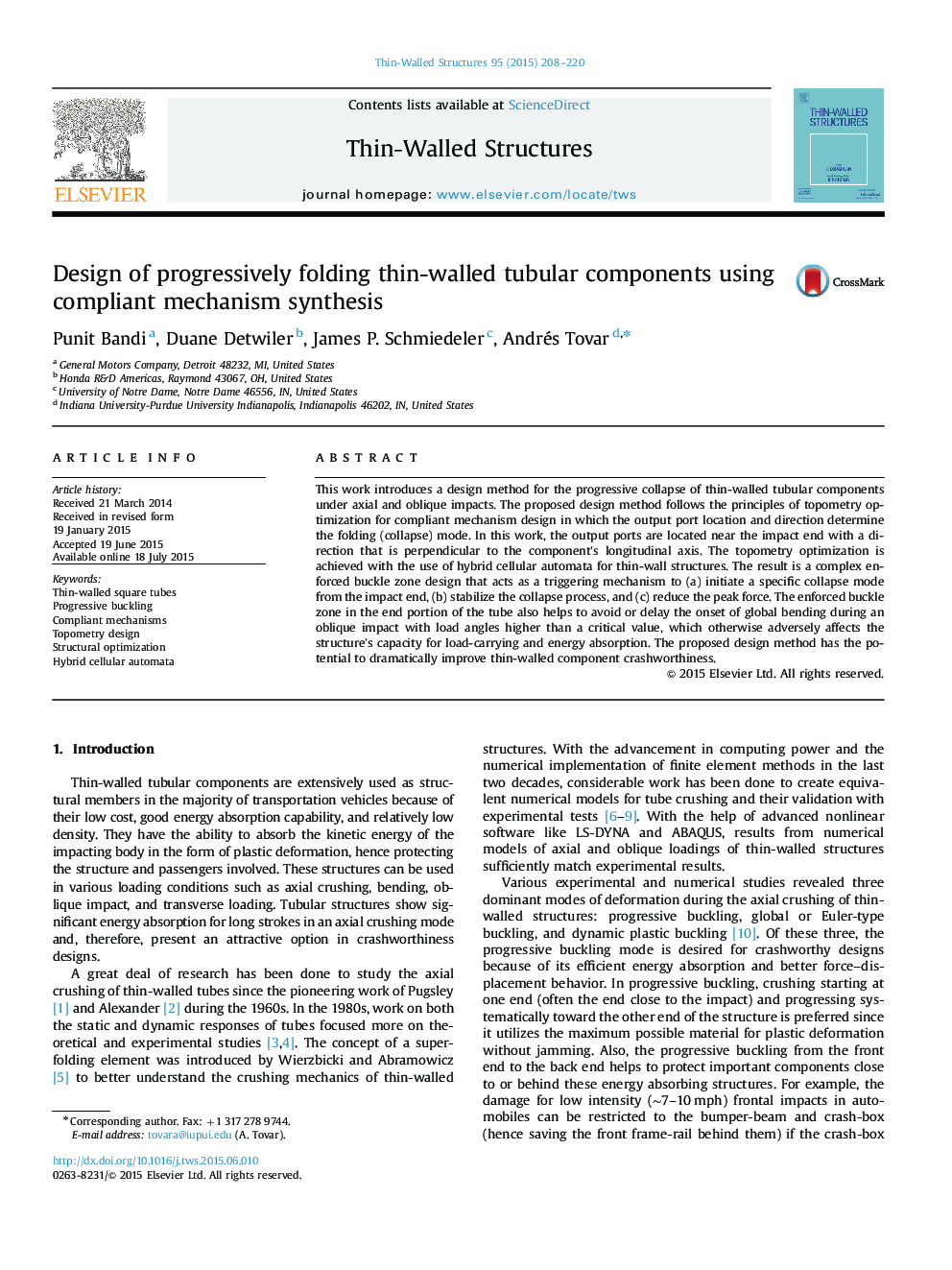| Article ID | Journal | Published Year | Pages | File Type |
|---|---|---|---|---|
| 308696 | Thin-Walled Structures | 2015 | 13 Pages |
•Compliant mechanism design principles are introduced for thin-walled components.•Location and direction of output ports determine the component folding mode.•Topometry optimization is used to design the enforced buckle zone.•Near-the-end folding initiation is achieved even with structure imperfections.•Progressive folding is achieved under axial and oblique impact.
This work introduces a design method for the progressive collapse of thin-walled tubular components under axial and oblique impacts. The proposed design method follows the principles of topometry optimization for compliant mechanism design in which the output port location and direction determine the folding (collapse) mode. In this work, the output ports are located near the impact end with a direction that is perpendicular to the component's longitudinal axis. The topometry optimization is achieved with the use of hybrid cellular automata for thin-wall structures. The result is a complex enforced buckle zone design that acts as a triggering mechanism to (a) initiate a specific collapse mode from the impact end, (b) stabilize the collapse process, and (c) reduce the peak force. The enforced buckle zone in the end portion of the tube also helps to avoid or delay the onset of global bending during an oblique impact with load angles higher than a critical value, which otherwise adversely affects the structure's capacity for load-carrying and energy absorption. The proposed design method has the potential to dramatically improve thin-walled component crashworthiness.
